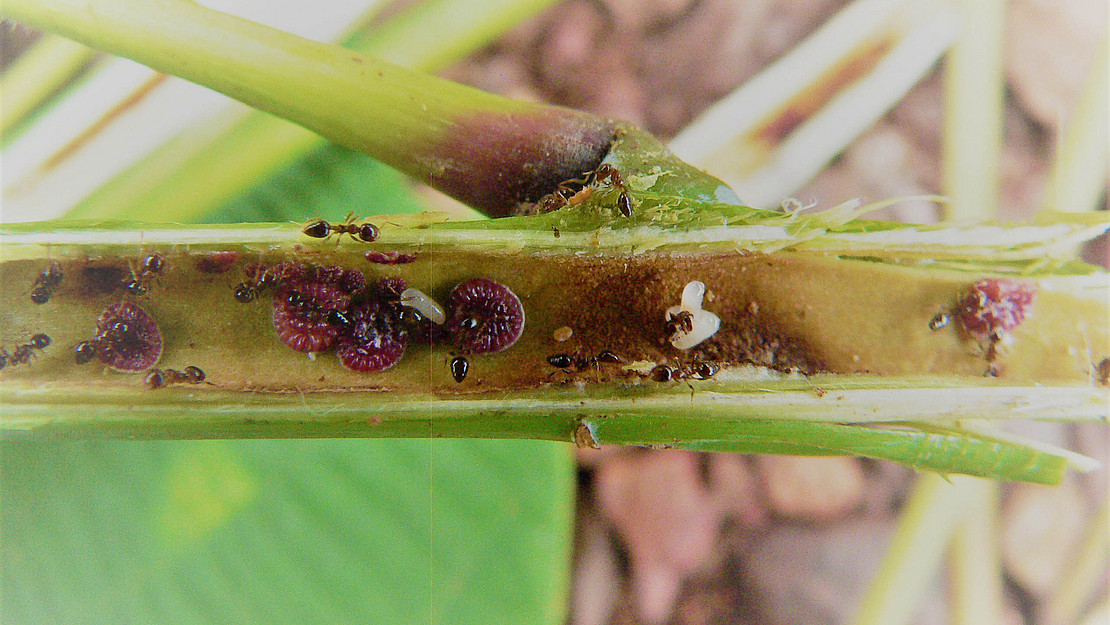This page contains automatically translated content.
Fascinating symbiosis of ant trees and ants
 Image: Daniela Guicking.
Image: Daniela Guicking.Dr. Daniela Guicking and Prof. Dr. Kurt Weising from the Department of Systematics and Morphology of Plants at the University of Kassel are studying the evolution of Southeast Asian ant trees of the genus Macaranga. They are using new DNA sequencing methods and applying them to these plants for the first time.
The method allows conclusions to be drawn about relationships between the Macaranga species and their evolutionary development, but also about the interaction between plants and animals. The goal is to reconstruct a complete phylogenetic tree and evolutionary history of the Southeast Asian ant trees.
Macaranga trees grow as pioneer plants at the edges or sparse areas of the rainforest. Of the approximately 300 species in the genus, about 30 live in close relationship with ant colonies. The ants live in the hollow trunks and branches of the trees, which are colonized by mated ant queens while they are still young plants. In the process, the plants produce protein- and fat-rich nutritive corpuscles that serve as food for the ants. In addition, the ants keep herds of scale insects that suck the sap of the host plant and are milked by the ants.
Ants drive away enemies of the plant
In turn, the animals defend their host plant by attacking predators (such as insects), disposing of deposited insect eggs and biting away climbing plants that threaten to overgrow the host plant. "So the plants maintain veritable private armies," says Professor Weising, head of the department.
Animal and plant are absolutely dependent on each other: Without the plant, the ant colony dies, but the plant also cannot survive in the long term without the ants.
Previous findings of the Kassel research group indicate that in the course of evolution, ant species frequently changed the Macaranga species that serves as their host plant -so a tree species and its symbiotic partner did not necessarily go through developments together. This is referred to as co-adaptation (as opposed to co-speciation, i.e. joint development).
In the three-year project, Daniela Guicking also wants to find out how plants spread during the Pleistocene. During the Pleistocene cold periods, the Indonesian islands and the Malay Peninsula were repeatedly connected due to significantly lower sea levels compared to today. "An interesting research question is whether the Sunda shelf was overgrown by precursors of today's ant trees, and thus whether there was genetic exchange between populations that are now separated by the sea," Guicking said.
The DFG is funding the project with about 200,000 euros.
Contact:
Dr. Daniela Guicking
University of Kassel
Department of Systematics and Morphology of Plants
Tel.: +49 561 804-4170
E-mail: guicking[at]uni-kassel[dot]de